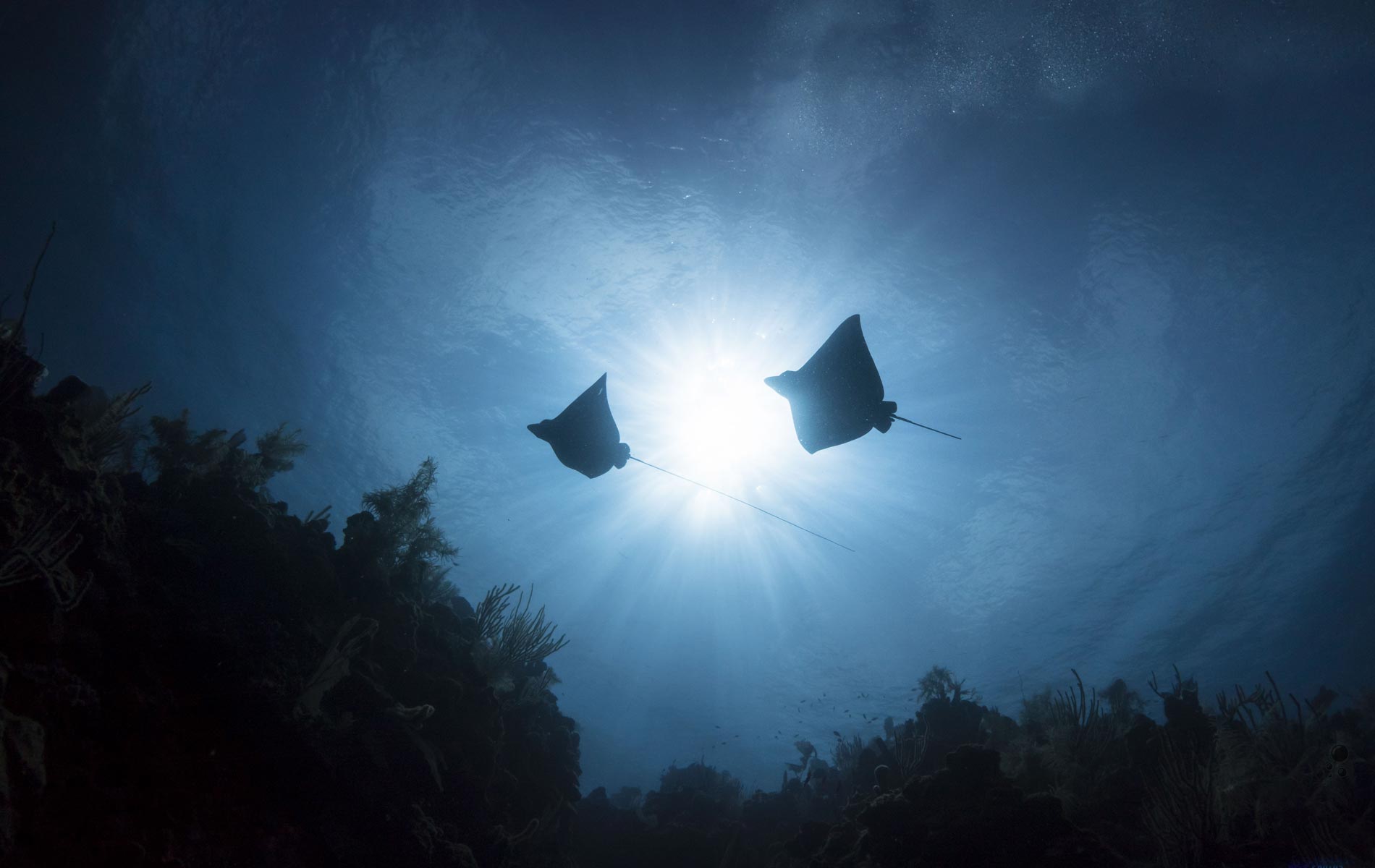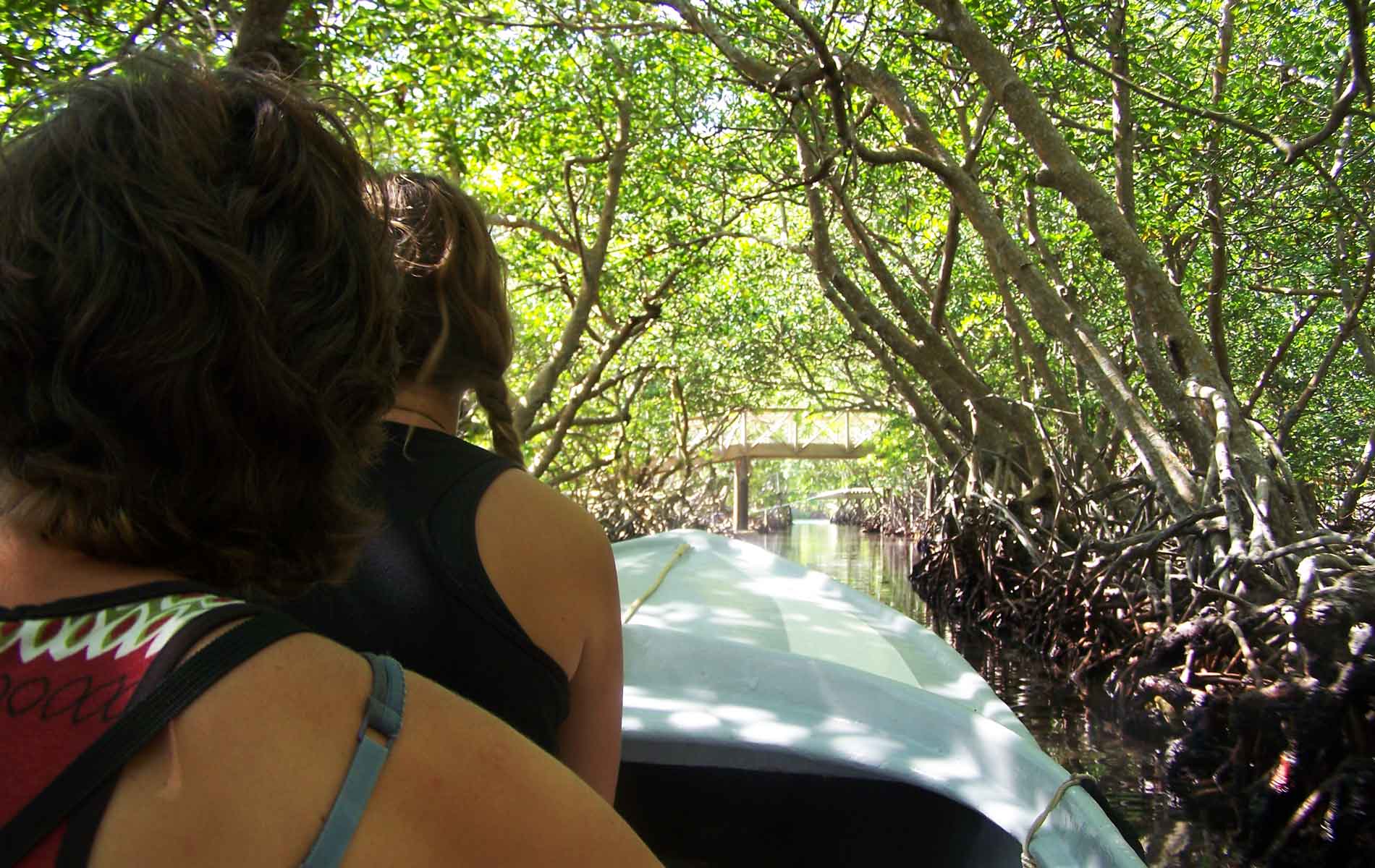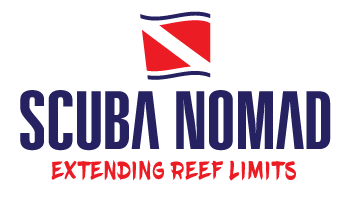DISCOVER ROATAN
Roatan is located 70 km from the coast of Honduras and is about 60 km long and 8 km wide. It is the largest island of the 8 Bay Islands.
Discover Roatan Underwater and by Land
Scuba Nomad takes you off the beaten path to explore those beautiful views few visit, both under the wonderful Caribbean sea that surrounds the island of Roatan, as well as the diverse island landscapes.

Underwater
Discover the amazing underwater marine life and fantastic seascapes.
Get more information about the different diving areas on the Island and the best dive sites.

by Land
Roatan offers beautiful hidden spots and an exuberant window into nature.
Explore Roatan on land beyond what the common tourist does. Scuba Nomad takes you to discover those hidden treasures that few know.

Underwater
Roatan belongs to a system of islands and cays 70 km/45 miles north of the Honduran mainland. The reef of the Bay Islands is part of the Mesoamerican system, which is the second largest coral barrier reef in the world. The water temperature ranges between 27℃/80℉ and 29℃/84℉ and the waters are crystal clear, with visibility up to 40 m/132 ft. Its coasts are home to a wide variety of mangroves and seaweed, corals and sponges, and fish of all colors. In order to become familiar with the different marine life and topographies we recommend at least a week of diving and exploration. It is our pleasure to introduce you to the different areas and the best dive sites so you can admire the diverse underwater world that surrounds Roatan.
ROATAN WEST
The West End and West Bay areas are the most popular areas and have the highest concentration of dive centers. You can access more than 50 dive sites within a 10 minute boat ride!! In some areas of the west side the main reef is as far as 1 mile away from the coastline, so this vast area has a lot to offer to divers; Drift dives, sunken ships, walls, canyons and swim-throughs. Something that is rare in much of Roatan, but very common in the west, are the smooth patches of sand at shallow depths. These are highly appreciated among macro photography enthusiasts as they give you the possibility to photograph vast fields of Garden Eels rearing their heads above the sand, as well as other tiny rarities such as a Lined Sole or a Sailfin Blenny. There are some coral farms on these sandbanks, where you will see how different coral species are being grown and monitored. Additionally, the western area of Roatan is the most suitable for those divers who like to see large marine animals: we have the most friendly turtles in the world! Also many eagle rays, snappers, groupers or barracudas.
SANDY BAY
Moving away from the West End we find much quieter areas, where there are fewer dive boats. The topography becomes more interesting in Sandy Bay. You will find walls covered with soft coral and riddled with huge cracks and channels, so we ask you not to forget your adventurous spirit or your diving light. Be sure to visit the appealing landscapes at the Spooky Channel or the Morat Channel, or dive into Bears Den, a beautiful cavern with a spectacular display of lights and shadows.
For those who are passionate about wreck diving, Sandy Bay offers the two largest shipwrecks off the coast of Roatan. These are el Aguila (The Eagle) and The Odyssey. Both were intentionally sunk in large sandy areas at approximately 30 m/110 ft and offer an excellent exploratory playground for advanced divers.
THE NORTH
The areas described above are also on the north side of Roatan, but are not as exposed to the North due to the curvature of the island. This area is called Palmetto Bay and Pristine Bay, where the topography is very attractive, even for divers with many hours underwater. The top of the reef is at 5 m/15 ft while the bottom of the wall is at about 30 m/100 ft, Between these depths you will find many swim-throughs, gaps in the wall, caverns and caves, pinnacles, walls rising from very deep to just above the surface...breathtaking!
This area is very large and since there are not many dive operations, it is a good place to find and hunt lionfish. The lionfish is the only fish that you can spearfish in the Roatan Marine Park. In the few years of this animal's time in Caribbean waters, the lionfish has developed an uncanny ability to read the intentions of divers - often the first diver to arrive is the only one who sees the lionfish before it quickly hides in its lair.
THE SOUTH
On a clear day you will be able to clearly see the high mountains of the Honduran mainland, so you will enjoy wonderful scenery at the beginning and end of your dive. The South is much more exposed to the trade winds from the east, so many days of the year the breeze does not allow navigation with dive boats. This is why you won't find many dive operations here, but the ones that are available will cover a much larger area than the ones on the north side.
The southern walls are much closer to the coastline, they fall from 6 m/20 ft dramatically into the darkness. Many times you can find ravines where the sand collapses in the form of an avalanche, a landscape that is somewhat shocking. But as you gradually return to the surface, you will enjoy different types of coral and multicolored sponges that are in an exceptional state of health! Lettuce coral fields, hundreds of years old barrel sponges, mountains of Orbicella faveolata (mountainous star coral), great pillar corals, black coral, fire coral, soft coral etc. It is spectacular! On calm days we can take you out to Cordelia Banks to view the untouched fields of staghorn coral that are preserved there.
You will find some of the most famous dive sites in Roatan here in the south side, such as the wrecks of Prince Albert, Mr. Bud, and the renowned Mary's Place.

Explore Roatan by Land
Visit the communities of West Bay, West End and Sandy Bay in the west of Roatan, which are the best known and most touristic places. When you enter the easternmost municipality of Santos Guardiola, you will find places more virgin to the impact of tourists. Do not stop venturing beyond what the common tourist dares, the islanders will receive you with a smile.

Hiking and Cultural Tours
Enrich your experience discovering Roatan by land. We have different options for you: We will take you to some of the most beautiful communities showing you the genuine island culture! If you like hiking, we will take you to the highest or to the easternmost point of the island, where you will enjoy the beautiful sceneries. Or if you are looking for a way to learn about the beautiful marine ecosystems in the Caribbean with a bit of history thrown in, then book the mangrove tour with us!

Local Gastronomy
We would love to organize a special meal after a day of diving or touring! Some of the most amazing dishes of Roatan do not appear on the menus of some of the most frequented restaurants. Some dishes can take time to source and prepare, we can organize a special event in which you have the chance to experience the taste of the most traditional island cuisine!

Roatan Local Market
This project started during the COVID lockdown as an effort to boost local economies. We organize local markets periodically and around the whole island. The Roatan Local Market is a space for the local artisans to sell their products and it will be accompanied by a multicultural program. You will spend the perfect family day with us! Check the next appointment in roatanlocalmarket.com










